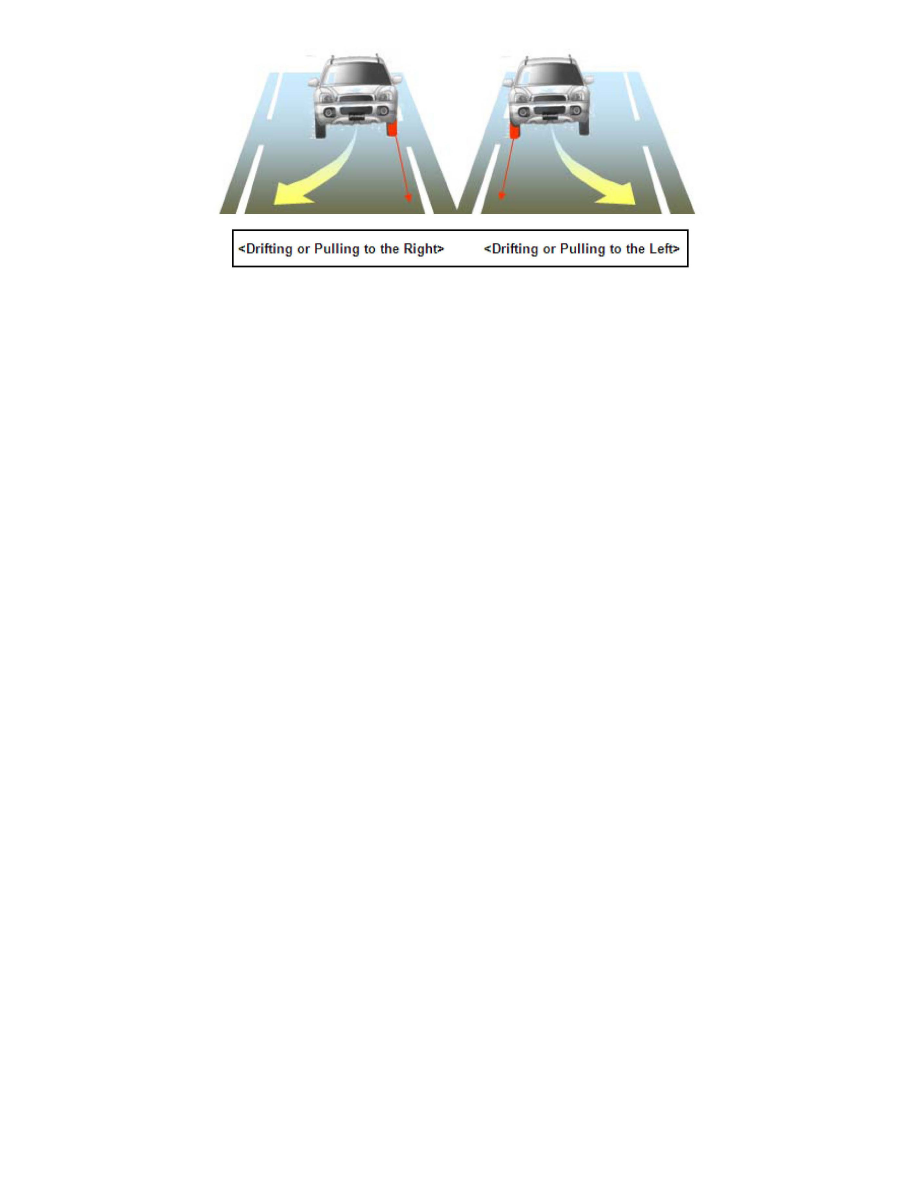Tucson FWD L4-2.4L (2011)

NOTE:
To ensure accuracy, it is recommended that the test be repeated with the vehicle travelling in the opposite direction on the same road.
5. Take two time measurements. First, time how long it takes for the vehicle to move from one edge to the other edge (case 1), as shown. Second, time
how long it takes for the vehicle to move across one complete lane (case 2), as shown. Use the conditions in the table below to confirm drifting or
pulling condition.
ALIGNMENT RACK TIPS
NOTE:
These tips apply to Hunter Engineering alignment racks and wheel balancers that feature StraightTrak.
NOTE:
It is imperative that the following items be followed to ensure accurate alignment readings.
Aligner Calibration/Maintenance Schedule - It is required that all dealer alignment racks be calibrated by a representative every 6 months. This allows
the representative to update vehicle specs and inspect and maintain equipment.
Rolling Compensation - The rolling compensation procedure is critical to ensuring an accurate alignment. When performing the rolling compensation, be
sure to do the following:
1. Set tire pressure to factory specification.
2. Verify that the vehicle is not excessively loaded. Remove any heavy items.
3. Ensure the lift is level so vehicle's suspension and steering are in a neutral position.
4. Set the target levels before rolling compensation. After completing the compensation, do not re-level the targets.
5. Roll the vehicle by turning the left rear tire. This will not disturb the vehicle's suspension and steering Systems.
